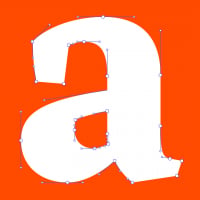Recommendations on building a foundry website
Comments
-
Hey I am about to try to build my site using Webflow and fondue. anyone here done it before and would be willing to hop on a call and give me any advice before I jump in?0
-
I’m in the process of building mine with Webflow and Fontdue. Some of it is easy, but Webflow recently updated their UI so it doesn’t always resemble the training videos. I’m having to throw a few simple pages together so I can figure out how to get all the CSS classes working. That said, it’s much easier than trying to customize a half-baked Wordpress theme and never being able to get everything working exactly right.0
-
I built my site with Fontdue and Webflow last fall. I had a bit of experience with HTML and CSS going into it and so the way Webflow structures things made a lot of sense. There are also a lot of tutorials and forum questions that I relied on when I got stuck.
Fondue integrates nicely, just dropping in little code blocks here and there to put in type testers, cart buttons, etc. The Fondue documentation is pretty clear as well and I found Tom to be very responsive if I got stuck or had a feature request.
harborb said:
Happy to chat more with anyone thinking of putting together this combo.Hey I am about to try to build my site using Webflow and fondue. anyone here done it before and would be willing to hop on a call and give me any advice before I jump in?
4 -
I too am building a new website with Webflow and Fontdue. Don't have much to say about it yet except that I'm feeling a bit overwhelmed, but going at it one step at a time just like how I learned type design. Will report my experience when it is done.0
-
Since recently, Gumroad has become open source:
https://gumroad.gumroad.com/p/gumroad-is-now-open-source
Does this mean that one can take their code for e-commerce solutions and reuse it to code a foundry site?2 -
Yes.
2 -
Any suggestions for a complete non-programmer building a foundry website? I will never be a programmer, but as a new foundry, I am seeking something economical and editable so that I can regularly add new releases. I am sure to eventually be on Fontdue, but would like to be profitable prior to this. Is this wishful thinking?
0 -
If you have no code knowledge and much money to invest, you would probably want to go via WordPress or paid web builders (Wix, Squarespace, Framer or so).
The three main questions here are:
1) E-commerce solution so you can sell your fonts.
I have a WP site, but haven't messed with Shopify or whatever. Instead, I am using Gumroad as an external solution. However, since I don't have a lot of sales, I am considering turning off the automatic purchase solution and selling licenses only on direct request. This is mainly so I can control to whom and for which purpose I sell, so I don't have to catch infringement in the wild. Not sure what e-commerce options are available on web builders.
2) Type tester
In general, there a very limited (if any) plugins for this. There was one WP plugin. I think there are no easy options for webuilders. Probably a custom-coded component.
3) License options in e-commerce solutions
Font licensing is a specific matter, so not all e-commerce solutions fit this purpose. I made product variants on Gumroad. But I sell there only Desktop and Basic Web licenses, so the UI is not very cluttered. If I wanted to sell all the license types and options, it would not work.0 -
Thank you for sharing your experience with Gumroad and CMS tools. (I am quite familiar with WordPress, but have many times experienced the "half-baked Wordpress themes" James Puckett mentioned above. In years past, I used to design every (client) site from scratch then have them custom coded in WP. Lately, it's been more about utilizing stock themes, many of which fail at some point during the build or lack critical documentation.)I would go entirely with Fontdue, but I have an odd issue in having attempted to change my foundry name, and now having two foundries. One distributor discouraged the name change, saying I'd have to keep the existing one as well. The first foundry's site is on WordPress and EDD, but the theme is quite old and incompatible with modern EDD. Thus, I had to remove the buy options and shift to links to distributor sites.In short, it seems I need two sites for now, so I am seeking at least one economical solution.I will follow your suggestions here to see what I cobble together. Thank you.0
-
The type tester you're probably thinking of is: https://github.com/kontur/fontsampler-wordpress-plugin however it's not currently maintained by the author.Igor Petrovic said:
2) Type tester
In general, there a very limited (if any) plugins for this. There was one WP plugin. I think there are no easy options for webuilders. Probably a custom-coded component.Having said that the plugin is basically a wrapper for the JS library which, with a bit of know how, is also easy enough to implement within a HTML block on your webpage.1 -
Drawcard said:
Though I have no knowledge in PHP programming I am able to vibe code a WordPress plug-in using the fontsampler.js libray that somewhat works.Having said that the plugin is basically a wrapper for the JS library which, with a bit of know how, is also easy enough to implement within a HTML block on your webpage.
Though this is sufficient for hobbyists like me, if you are starting a professional foundry your should get this done by some experienced WordPress developer, as LLM generated codes are known to contain bugs and security issues.2 -
After success with vibe coding a Wordpress plugin for variable font, I vibe coded another Wordpress plugin for Static fonts which supports obfuscation of sources and typography slidersmitradranirban said:Though I have no knowledge in PHP programming I am able to vibe code a WordPress plug-in using the fontsampler.js libray that somewhat works.
Though this is sufficient for hobbyists like me, if you are starting a professional foundry your should get this done by some experienced WordPress developer, as LLM generated codes are known to contain bugs and security issues.2 -
mitradranirban said:
Though I have no knowledge in PHP programming I am able to vibe code a WordPress plug-in using the fontsampler.js libray that somewhat works.
Though this is sufficient for hobbyists like me, if you are starting a professional foundry your should get this done by some experienced WordPress developer, as LLM generated codes are known to contain bugs and security issues.My vibe-coded wordpress plugin to showcase variable font has passed manual scrutiny by wordpress plugin team developers and is now available for use in any wordpress site.
https://wordpress.org/plugins/variable-font-sampler/4 -
@mitradranirban Congrats! Looks interesting, I hope I will find time in the upcoming weeks to test it on my site. Thanks for your effort.
BTW, if I understand correctly, it obfuscates font source by turning letters into images through PHP?0 -
Igor Petrovic said:
Thanks. Despite being bad on many counts, the LLMs are usefull for us non programmers to code without going through the rigorous process of learning a programming language.
BTW, if I understand correctly, it obfuscates font source by turning letters into images through PHP?
The font obfuscation feature is available in yet to be approved static fonts plugin, but I am working to make it available in variable font sampler.
The obfuscation in static font tester works by renaming the font file to some random character string, so that the user can not just try to download the font from its name, and the font file is saved in a folder accessible to wordpress site admin only. The letters are not converted to images.
You can see the demo of my plugins at https://fontsampler.atipra.in1 -
The plugin has passed security and usability testing by Wordpress.org and is available to all Wordpress usersmitradranirban said:
After success with vibe coding a Wordpress plugin for variable font, I vibe coded another Wordpress plugin for Static fonts which supports obfuscation of sources and typography sliders
https://wordpress.org/plugins/font-type-tester/3 -
When I created my website, there were no such great tools as today, as Fontdue or Gumroad. I worked with Ashler Design, and I am still committed to them as I am at the moment, setting up a new version of my website. If I were starting fresh, I would probably ask a few people for budgets and then choose what makes more sense to you.1
Categories
- All Categories
- 46 Introductions
- 3.9K Typeface Design
- 487 Type Design Critiques
- 563 Type Design Software
- 1.1K Type Design Technique & Theory
- 656 Type Business
- 861 Font Technology
- 29 Punchcutting
- 520 Typography
- 119 Type Education
- 324 Type History
- 77 Type Resources
- 112 Lettering and Calligraphy
- 33 Lettering Critiques
- 79 Lettering Technique & Theory
- 558 Announcements
- 94 Events
- 114 Job Postings
- 170 Type Releases
- 179 Miscellaneous News
- 276 About TypeDrawers
- 54 TypeDrawers Announcements
- 120 Suggestions and Bug Reports









